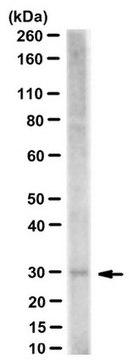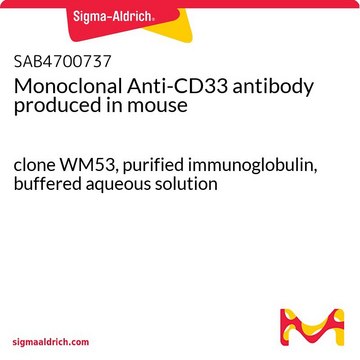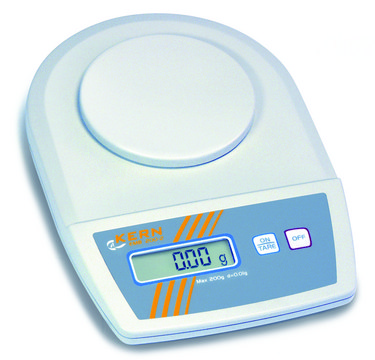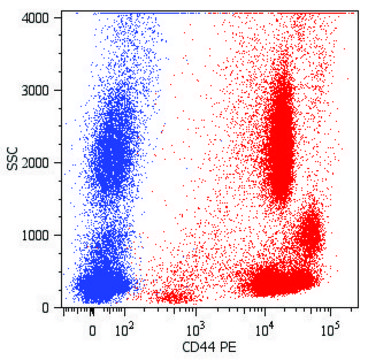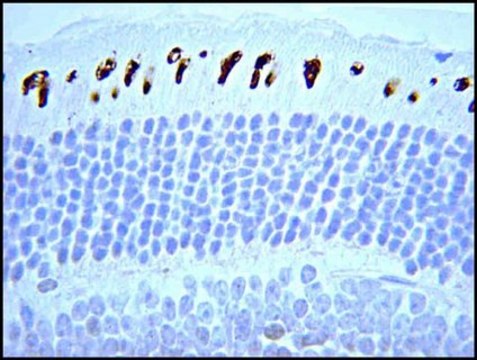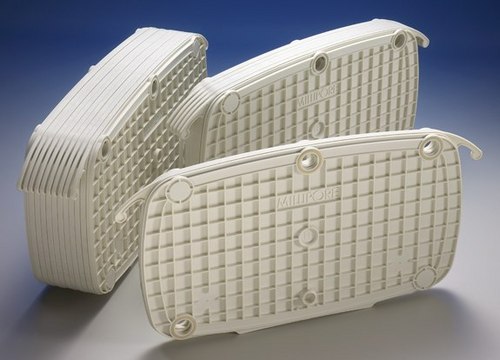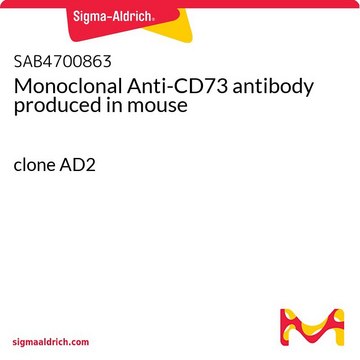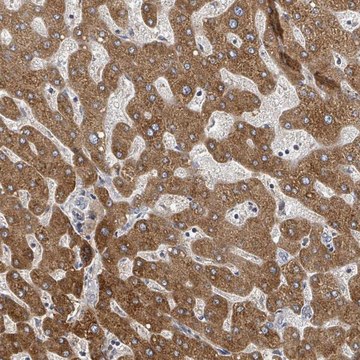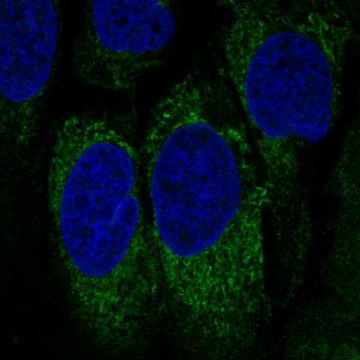推荐产品
生物来源
mouse
抗体形式
purified immunoglobulin
抗体产品类型
primary antibodies
克隆
P67.6, monoclonal
种属反应性
human
包装
antibody small pack of 25 μg
技术
flow cytometry: suitable
immunocytochemistry: suitable
inhibition assay: suitable
同位素/亚型
IgG1κ
NCBI登记号
UniProt登记号
靶向翻译后修饰
unmodified
基因信息
human ... CD33(945)
一般描述
Myeloid cell surface antigen CD33 (UniProt: P20138; also known as Sialic acid-binding Ig-like lectin 3, Siglec-3, gp67, CD33) is encoded by the CD33 (also known as SIGLEC3) gene (Gene ID: 945) in human. CD33 is a single-pass type I membrane sialoadhesion protein that is expressed by myeloid stem cells, myeloblasts, monoblasts, monocytes, macrophages, and granulocyte precursors and preferentially binds to alpha-2,6-linked sialic acid. CD33 is not expressed in erythrocytes, platelets, B-cells, T-cells, and NK cells. Hence, it can serve as a marker for myeloid cells. It is synthesized with a signal peptide (aa 1-17), which is subsequently cleaved off in the mature form. It contains an extracellular domain (aa 18-259), a transmembrane domain (aa 260-282), and a cytoplasmic domain (aa 283-364). CD33 contains two copies of a cytoplasmic motif (aa 338-343 and 356-361), which is referred to as the immunoreceptor tyrosine-based inhibitor motif (ITIM). This motif is involved in modulation of cellular responses. In the immune response, CD33 may act as an inhibitory receptor upon ligand induced tyrosine phosphorylation by recruiting cytoplasmic phosphatase(s) via their SH2 domain(s) that block signal transduction through dephosphorylation of signaling molecules. Human CD33 is reported to contain two tyrosine residues in its cytoplasmic domain (tyrosine 340 and 358) that when phosphorylated could function as docking sites for the phosphatases, SHP-1 and/or SHP-2, and enable CD33 to function as an inhibitory receptor.
特异性
Clone P67.6 specifically detects human CD 33.
免疫原
FMY9S5 cells expressing CD33.
应用
Anti-CD33, clone P67.6, Cat. No. MABF2163, is a mouse monoclonal antibody that detects CD33 and has been tested for use in Flow Cytometry, Immunocytochemistry, and Inhibition assays.
Inhibition Assays: A representative lot of CD33 conjugated to calicheamicin inhibited inhibits the formation of colonies from AML marrow samples. (Hamann, P.R., et. al. (2002). Bioconjug Chem. 13(1):47-58).
Flow Cytometry Analysis: A representative lot detected CD33 in Flow Cytometry applications (Kussick, S.J., et. al. (2003). Arch Pathol Lab Med. 127(9):1140-7).
Immunocytochemistry Analysis: A representative lot detected CD33 in Immunocytochemistry applications (van Der Velden, V.H., et. al. (2001). Blood. 97(10):3197-204).
Flow Cytometry Analysis: A representative lot detected CD33 in Flow Cytometry applications (Kussick, S.J., et. al. (2003). Arch Pathol Lab Med. 127(9):1140-7).
Immunocytochemistry Analysis: A representative lot detected CD33 in Immunocytochemistry applications (van Der Velden, V.H., et. al. (2001). Blood. 97(10):3197-204).
Research Category
Inflammation & Immunology
Inflammation & Immunology
质量
Evaluated by Flow Cytometry in THP-1 cells.
Flow Cytometry Analysis: 1 µg of this antibody detected CD33 in one milliion THP-1 cells.
Flow Cytometry Analysis: 1 µg of this antibody detected CD33 in one milliion THP-1 cells.
目标描述
39.82 kDa calculated.
外形
Protein G purified
Format: Purified
Purified mouse monoclonal antibody IgG1 in PBS without azide.
储存及稳定性
Stable for 1 year at -20°C from date of receipt. Handling Recommendations: Upon receipt and prior to removing the cap, centrifuge the vial and gently mix the solution. Aliquot into microcentrifuge tubes and store at -20°C. Avoid repeated freeze/thaw cycles, which may damage IgG and affect product performance.
其他说明
Concentration: Please refer to lot specific datasheet.
免责声明
Unless otherwise stated in our catalog or other company documentation accompanying the product(s), our products are intended for research use only and are not to be used for any other purpose, which includes but is not limited to, unauthorized commercial uses, in vitro diagnostic uses, ex vivo or in vivo therapeutic uses or any type of consumption or application to humans or animals.
未找到合适的产品?
试试我们的产品选型工具.
法规信息
新产品
我们的科学家团队拥有各种研究领域经验,包括生命科学、材料科学、化学合成、色谱、分析及许多其他领域.
联系技术服务部门